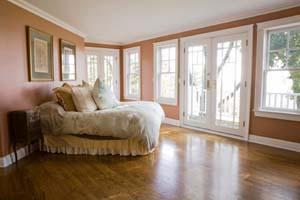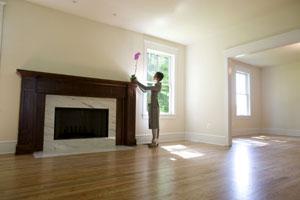Natural lighting of buildings
Post from EditorialsA good natural lighting is essential in a house, because it determines the sense of natural color vision with a positive effect on human psyche.
Natural light in buildings
 Once the rhythm of human life was closely linked to the cycle of the sun. They went to sleep as the sun was setting, because candles, oil lamps and fires gave a dim light and were too expensive, so the daily life was carried out according to the light of the sun.
Once the rhythm of human life was closely linked to the cycle of the sun. They went to sleep as the sun was setting, because candles, oil lamps and fires gave a dim light and were too expensive, so the daily life was carried out according to the light of the sun.
For this reason, the houses were constructed so as to make the most of natural light, and then taking particular account of the orientation, the presence and size of windows and materials of the interior finishes.
The link with sunlight is also reflected in the architecture of the past where niches, overhangs, eaves, ledges and recesses were designed on the basis of the shadows that the sun drew on the facades at different times of the day.
Designing buildings using natural light
Even today, however, it is important to design the buildings so as to make the most of natural light. However it must be said that the presence of sunlight takes ambivalent aspects.
In fact, while it is nice to have a ray of sunshine entering a space, that warms not only the environment, but also the soul, on the other hand, the sunlight can be dazzling if too intense or too low in the days of bad weather and it can produce excessive heat in the summer.
For this reason during the design, is considered more scattered or reflected sunlight and therefore indirect.
The presence of a reflective surface causes the heat absorbtion and visible light is less intense.
Over time, many measures have been designed to take advantage of indirect sunlight. Any kind of shield can be useful for this purpose, from the branches of a tree and vines, with blinds, curtains, shades, and so on.
Useful to reduce the heat input in a house are also the frames of the windows of clear color, while the openings facing north allow the entry of indirect light without causing excessive heating of the environments. The amount of light that enters indirectly in a room is influenced by several factors. One of these is the position of the window.
The amount of light that enters indirectly in a room is influenced by several factors. One of these is the position of the window.
Taking into account, in fact, that the sky horizon has a brightness of about one-third, compared to the sun that it is perpendicular to the ceiling, it is clear that, for a given surface, a window on the roof will get a greater amount of light compared to a conventional wall.
Among the conditions that affect daylighting there are the height of the rooms, their depth, the type of internal surfaces. It is in fact more difficult to light low rooms, with dark walls or elongated rooms with windows on the short side. In this case, the openings need to be provided on a second wall surface finishes and more reflective.
The presence of windows and skylights can generate, however, in some cases, also visual disturbances. Typical is the case of the proximity to the monitor of a computer, on which you can create annoying reflections. For this reason, a proper shielding of the windows with curtains and blinds should never miss. In conclusion, we can say that a good natural lighting is essential in a house, because it determines the sense of naturalness of the vision of colors that has a positive effect on the human psyche.
In conclusion, we can say that a good natural lighting is essential in a house, because it determines the sense of naturalness of the vision of colors that has a positive effect on the human psyche.
However, it has the characteristic of being completely inconsistent, because it is linked to weather conditions as well as being totally absent in the night hours. The artificial light, however, is practically always available, and can be manipulated at will by the designer.
For this reason the best solution is represented by a perfect integration of these light sources, which allows to make the most of the natural light and to be able to compensate for its absence with the artificial one.
80269 REGISTERED USERS










